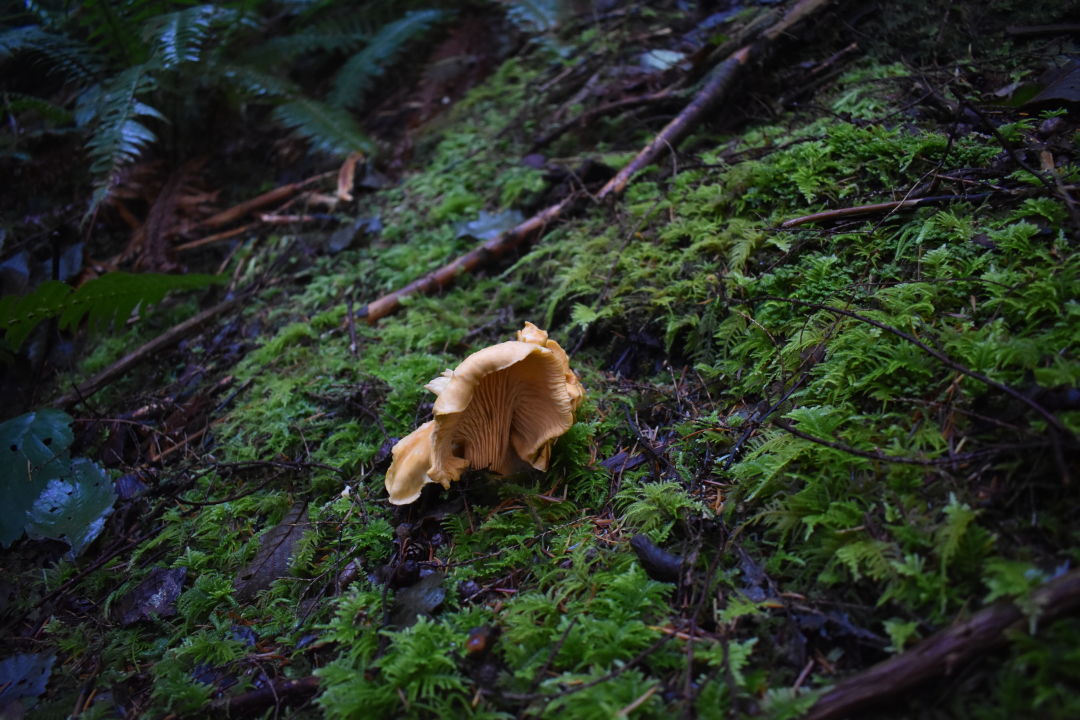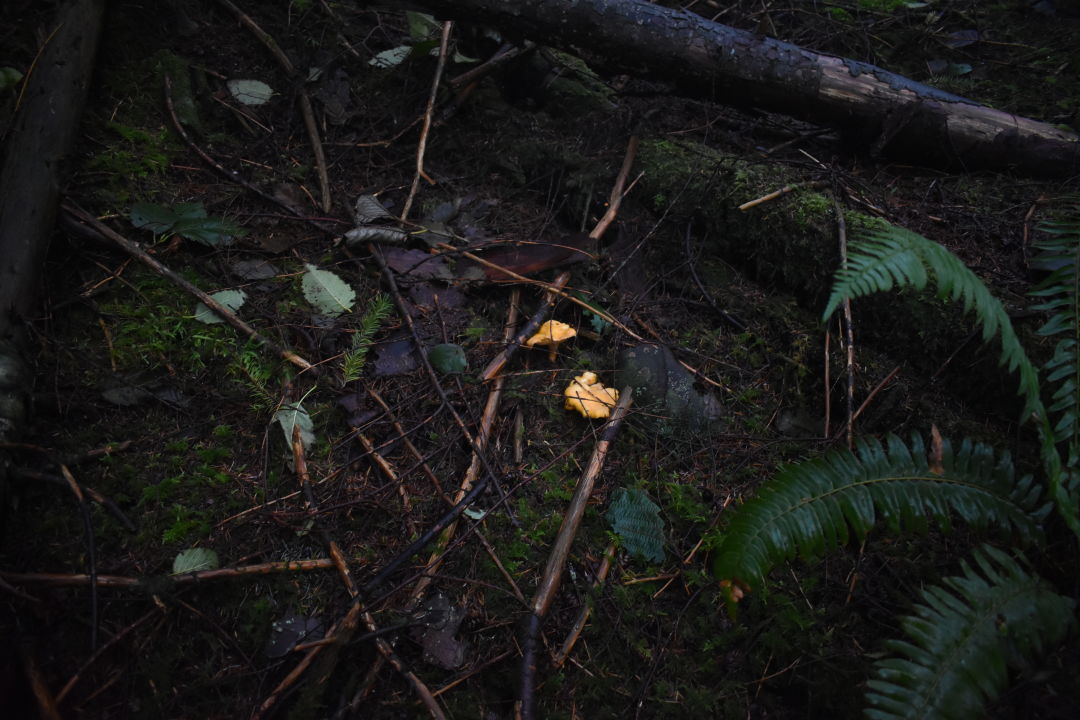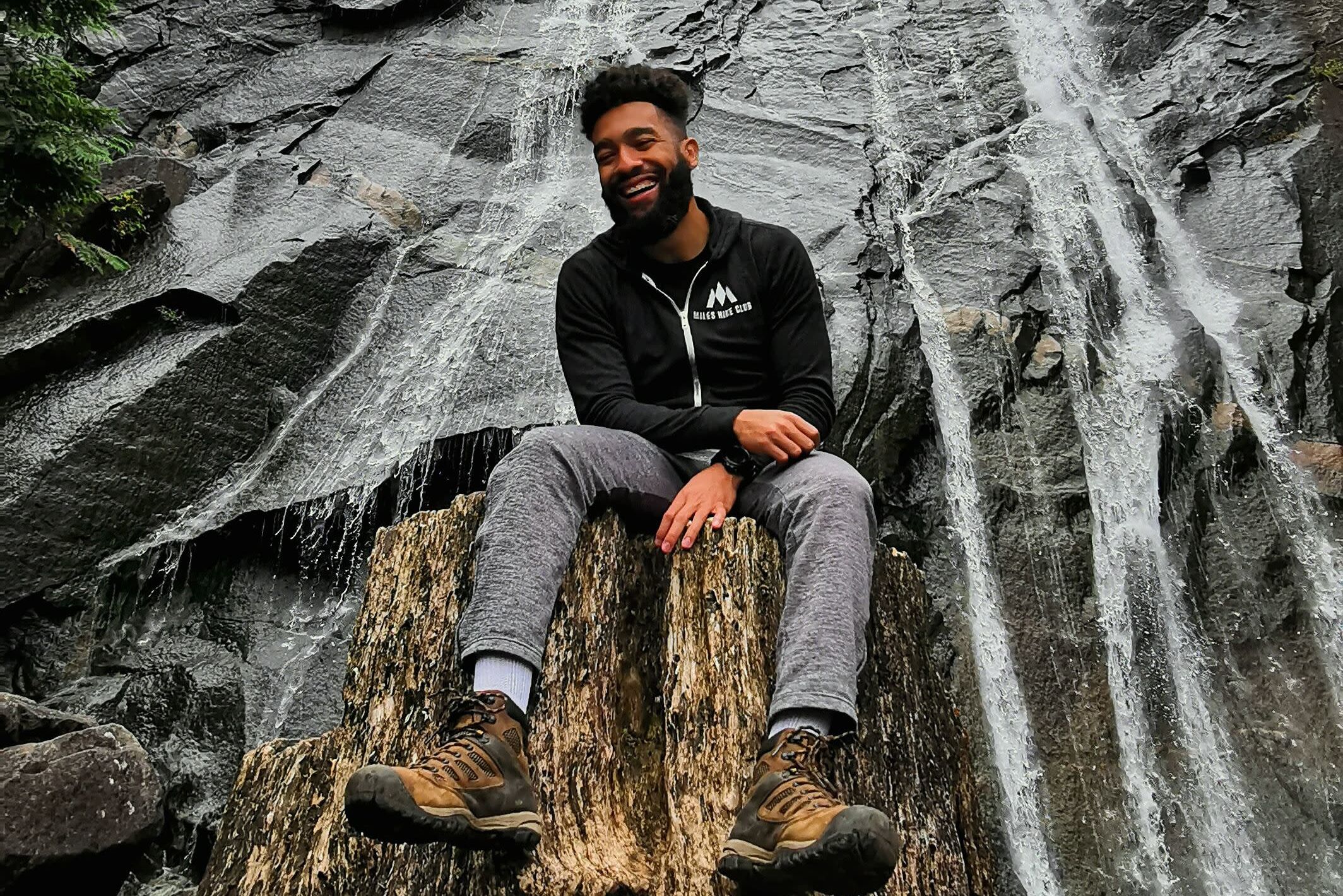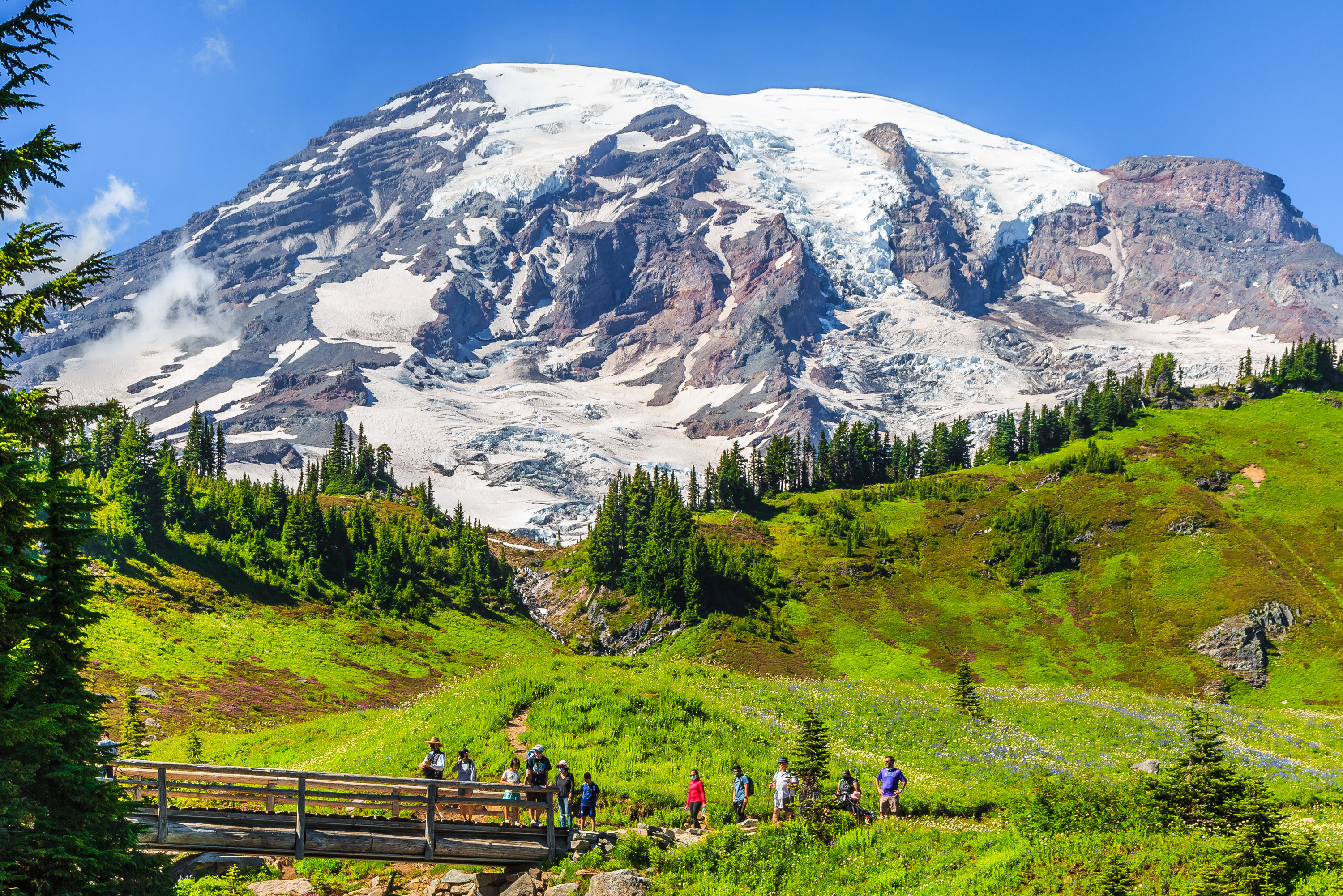How to Hunt for Chanterelles Near Seattle

A chanterelle on Tiger Mountain.
Image: Stefan Milne
For a long time, even though I love them, I was afraid to forage for mushrooms. Then, after years of professional cooking, I had a sort of epiphany: I have cooked literally hundreds of pounds of chanterelles and morels. I think I can confidently spot them in the wild. Turned out, I could.
This year most of us are looking for things to do outdoors. And you probably can forage some chanterelles too. Here are the basics:
Find a Spot
This is the most difficult part. Luckily, chanterelles are super abundant in Washington, particularly in October, though I've found some as late as Thanksgiving. Look in second-growth forests (previously logged) around douglas firs. You may or may not need a permit to forage, depending on where you go (for instance in Mt. Baker–Snoqualmie National Forest, you should get a free use permit that will let you gather up to five gallons). I tend to find chanterelles in mossy areas. A lot of the forests around Mount Rainier are a good bet. I have a spot on Tiger Mountain where I found three pounds this last weekend.
As you hike, look along the sides of the trail. If you spot a smudge of gold in the dirt and find a chanterelle, stick around. If there’s one, there are almost always more. I drop pins on my phone so I can return next year. If you go out and don’t find any (it happens), no worries—you just went for a mindful hike.

To spot them on a hike, you have to develop an eye for the smudges of gold. They look a lot like fallen maple leaves from a distance.
Image: Stefan Milne
Learn What They Look Like
Chanterelles are great because they're easy to distinguish from lookalikes. And the main lookalike in Washington—the false chanterelle—isn’t especially poisonous and doesn't taste good. You might shit your pants (probably not even that), but you won’t die. The best way to acquaint yourself with real chanterelles is to buy a couple at the store and inspect them. Here are the things you should note: Chanterelles are light gold, like sand almost. They smell both earthy and fruity. Their gills, the part under the cap, are shallow, rubbery, and go at least part way down the stem. And when you tear them apart, they should be solid all the way through the stem and have white flesh inside. If they look really slimy, brown, moldy, etc., leave them be. Obviously before you find anything in the woods and eat it, do plenty of research: Watch videos; get a trusted identification book; go with a friend who knows, ideally. But mushroom-wise chanterelles are about as identifiable as huckleberries.
Cut and Eat
Bring a small knife (a pocket knife is great—in a pinch, I’ve used the little knife-y bit on a wine key) and a bag out with you. When you find a mushroom, brush away a little of the debris around it and find where the stem goes into the soil. Cut at the surface of the soil, so that you get a good portion of the edible stem, but leave the rest in the soil so it will regrow. When you get them home, brush off the dirt and pine needles, and store mushrooms in an open paper bag in your fridge. When ready to cook, tear them into evenly sized pieces and sear in a hot pan with a bit of oil. When they’re nicely caramelized, I tend to take them in two directions. One way: deglaze with white wine or dry sherry and add a knob of butter and some fresh thyme to the pan (garlic and shallots are good, too). The other way: deglaze with soy sauce and a bit of rice vinegar.
Updated on October 28 to reflect that limits are on gallons gathered, not pounds.




